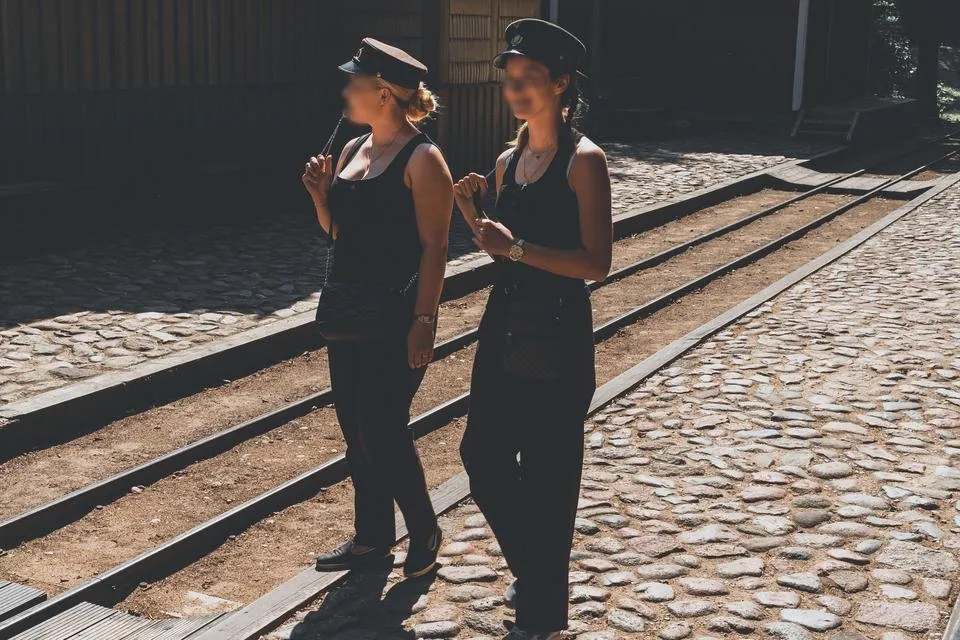!steemitworldmap 57.386038 lat 21.534109 long NARROW GAUGE RAILWAY FROM THE PAST d3scr
Get transferred back to the 1920’s and imagine going to work, to school, to visit someone riding the narrow gauge train. Feel it to see it!
LOCATION
There are many stops on the route, but the main station is situated in the seaside open-air museum and is called "Muzejs" (Museum). It is a forest area with tons of pine trees. And we are talking about Ventspils, Latvia!
HISTORICAL SIGNIFICANCE
The narrow gauge railway is part of the open-air seaside museum. The year 1963[1] is when the railroad has been laid and accounts to the shorter circle line. In 2010[1] the museum put the second line adding an additional 2 km[1] and connecting "Lemberga Hute" with the museum via rail.
Historically, there were only three different types of narrow gauge railways in Latvia, the 1000 mm, 750 mm and 600 mm.[1] The museum uses the 600 mm[1], which historically have been used for the purposes of transportation of military supplies during World War I by Germans[1] occupying the land at that time. And later has been used as public transport. The last line of 600 mm gauge in Latvia was closed in 1972[1] thus making it a heritage railway.
DESCRIPTION
The railway experience is a separate entity which has to be purchased at the railway station and does not permit entry to the museum itself. But this doesn't make it less enjoyable. Here waiting for the ride one could notice the different buildings typical of those times.
The depo is an excellent example of traditional German barns. Then the cash desk, the booking office and the end destination “Kalns” (Mountain) are the structures to represent the architectural designs of the 1920’s.[2]
The booking office serves as a waiting room for passengers and lately as a museum with a very detailed exposition in Latvian and old deco.
The houses are not the only structures of interest. At some point closer to the station “Kalns” (Mountain) the train will cross the wooden bridge built to mimic the ones from the past.
The end stop of the second line has one last attraction for passengers in place. Get off the train and go to the front to watch the operators to separate the engine locomotive and turn it around with the help of a swivel.
There are 8 wagons in possession of the museum, 3rd, 2nd class and open. The latter has got the original trolley from WW1 times.[2]
IMPRESSION
The line takes you on a journey through the forest. To be so close to nature and breathe the fresh forest/sea air is fantastic!
But let's start from the beginning. The very first experience is actually getting into one of the wagons. So authentic! I love the open wagons, so no matter where you sit, the view will still be amazing!
The conductor ladies are another point to make. The whistle, the uniform and the ticket check must have been borrowed from the past.
The area throughout the journey is clean and tidy, I even wish they would go slower to take in the calm forest atmosphere.
If you are lucky, you get to hear the train whistle blowing near the crossing or train stops.
After arriving at the end stop called "Kalns" (Mountain), one could either go to the amusement park "Lemberga Hute" or ride back to the main station or walk into the city (probably good 30 minutes) - entirely up to you!
USEFUL INFO
There are two lines to choose either the small circle one around the anchor Park or the mountain line which goes all the way to the Lemberga Hute and where the swivel is.
At the moment of the ride, trains were operating once an hour.
The ride takes approximately 20 minutes.
The ladies at the ticket desk struggling with English, help yourselves by pointing to the desired ticket or find someone young nearby to help with translation.
SHORT TEASER VIDEO
VENTSPILS MUZEJS. History [Online] Available: http://muzejs.ventspils.lv/en/seaside-open-air-museum/narrow-gauge-railway/history/ Accessed 23 October 2018. ↩ ↩ ↩ ↩ ↩ ↩ ↩
VENTSPILS MUZEJS. Rail Facilities [Online] Available: http://muzejs.ventspils.lv/en/seaside-open-air-museum/narrow-gauge-railway/rail-facilities/ Accessed 23 October 2018. ↩ ↩












